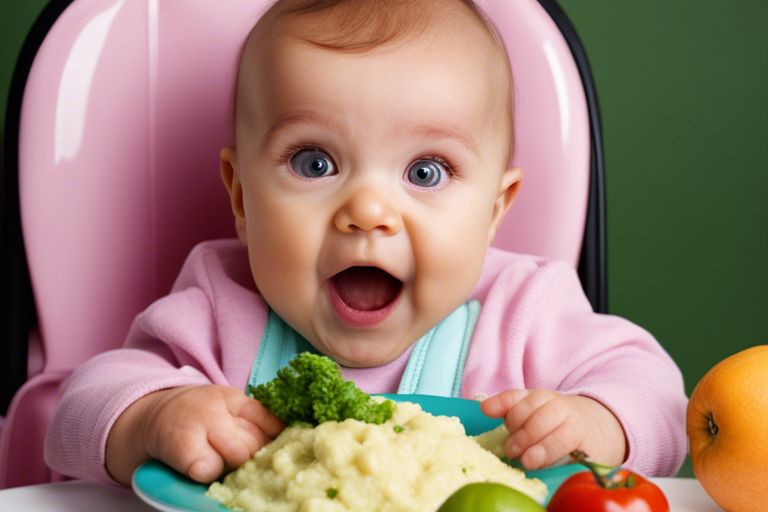tips, tricks and guides for parenthood
Baby-led weaning is an exciting stage in your little one's development, but it's crucial to know when they are ready for solid foods. Look out for signs such as being able to sit up unassisted, showing an interest in what you're eating, and the ability to pick up food and bring it to their mouth. Introducing solids too early can lead to choking, while waiting too long may delay their development. Keep an eye out for these important signs to ensure a smooth and safe transition to solid foods for your baby.
Readiness for solid foods goes beyond your baby's age. While most babies are ready to start around six months old, it's important to look for signs of readiness rather than relying solely on the calendar.
Readiness involves observing your baby for certain signs that indicate they are ready for solid foods. Look for strong neck control, the ability to sit well with support, showing interest in food, and the disappearance of the tongue-thrust reflex.
This stage is crucial as introducing solids too early can pose a danger to your baby's digestive system. On the other hand, waiting too long can lead to nutritional deficiencies. It's important to strike the right balance and pay attention to your baby's cues.
One Readiness for Babies to Start Solid Food is when they show physical signs of readiness. These signs indicate that your little one may be ready to begin their solid food journey. Here are some key indicators to look out for.
One of the first signs that your baby is ready to start solid foods is when they have good head control. Being able to hold their head up steadily is important to prevent choking when eating solid foods. If your baby can sit with their head upright and steady, they may be ready to start exploring new tastes and textures.
When your baby can sit well with support, it's a positive sign that they are ready to try solid foods. This means they can hold themselves upright and are less likely to slump over or slide down. Babies need to sit well to be able to swallow food safely and effectively.
Signs of readiness include sitting with a straight back, minimal slouching, and good head control. Always stay close and support your baby during meal times to ensure a safe and enjoyable experience.

One of the signs your baby may be ready for solid foods is their curiosity about what you are eating. If they start watching you intently while you eat, reach out for your food, or show interest in what's on your plate, it could be a cue that they are ready to explore new tastes and textures.
One of the key behavioural cues to look out for is your baby's ability to communicate hunger. This can manifest in various ways, such as crying, sucking on their hands or fingers, or turning their head towards the breast or bottle. These cues show that your baby is aware of their hunger and is trying to let you know that it's feeding time.
With solid foods, it's important to pay attention to these cues and introduce new foods gradually to prevent choking hazards. Start with single-ingredient purees and observe how your baby reacts to different textures and flavours. Do not forget, every baby is unique and will progress at their own pace.
Keep an eye out for signs that your baby is ready to start solid foods. These can include sitting up without support, showing interest in what you're eating, and being able to close their mouth around a spoon. Every baby is different, so it's crucial to look for these cues rather than relying solely on their age.
Choosing the right first foods for your baby is crucial for a smooth transition to solids. It is recommended to start with single-ingredient, easy-to-digest foods such as pureed vegetables or fruits. Avoid honey and foods that pose a choking hazard, such as whole grapes or nuts. Introduce new foods one at a time to watch for any allergic reactions.
A: Look for signs such as sitting up with support, showing interest in what you are eating, and reaching out for food.
A: Most babies are ready for solid foods around 6 months of age, but it's important to look for signs of readiness rather than just going by the calendar.
A: If your baby pushes food out of their mouth with their tongue, seems uninterested in eating, or has difficulty swallowing, they may not be ready for solids.
A: Start by offering small amounts of single-ingredient purees, such as mashed fruits or vegetables, and gradually introduce a variety of flavours and textures.
A: Offer a variety of nutrient-dense foods, continue to breastfeed or formula feed, and pay attention to your baby's cues to ensure they are getting enough to eat.